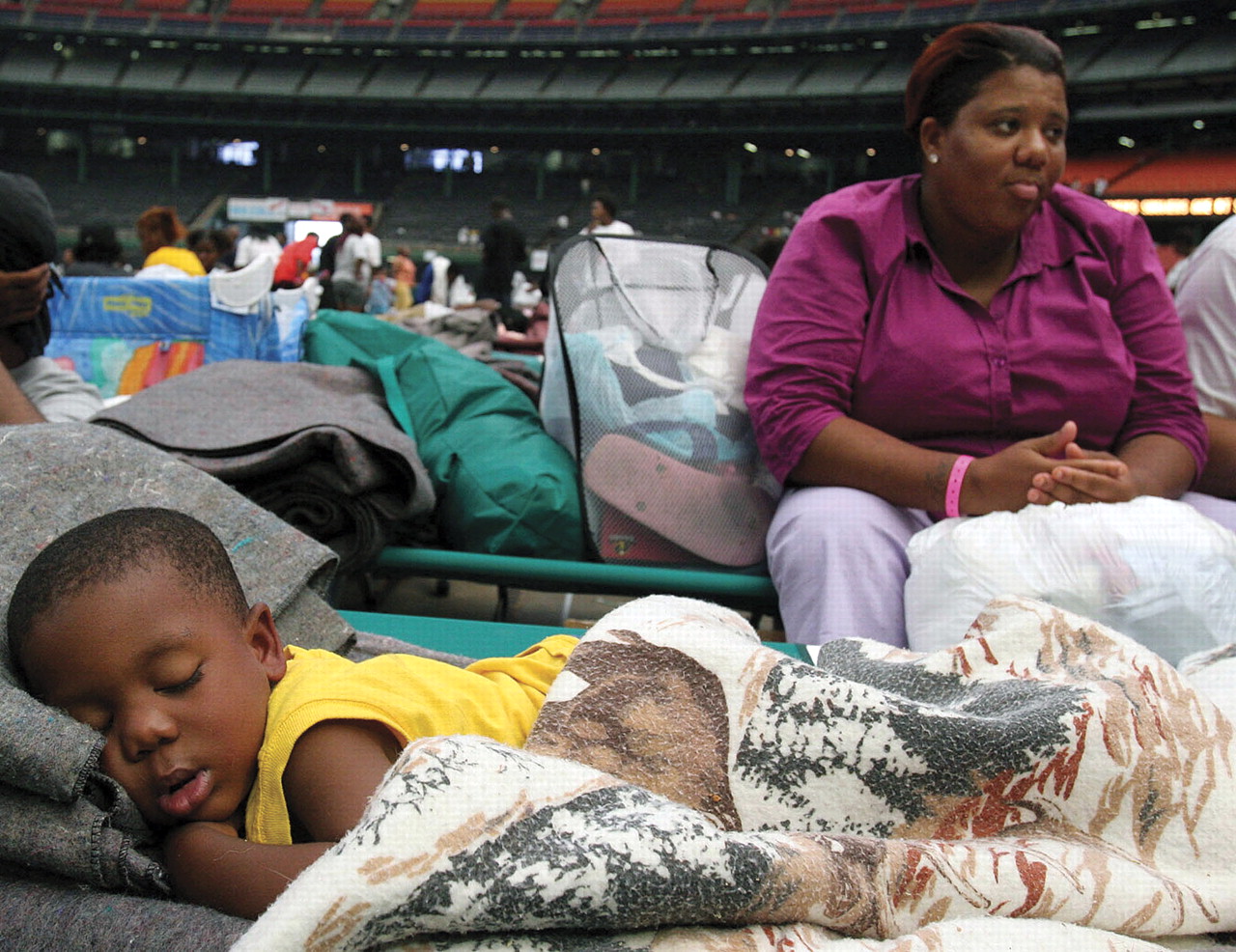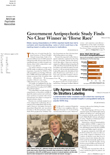Weeks after hurricanes Katrina and Rita struck, hundreds of thousands of adults and children of the Gulf Coast area remain in temporary housing. Some were displaced first by Katrina and then by Rita. Some are staying at schools, churches, or military bases, while others are camping out in motels, hotels, or homes of relatives or friends. Some have beds, but many still sleep on cots, bleachers, pews, or the floor.
Even in the absence of trauma, disruption of a child's usual sleeping environment often interferes with sleep, said Kyle Johnson, M.D., an assistant professor of child and adolescent psychiatry at Oregon Health and Science University and codirector of the pediatric sleep program at the university's Doernbecher Children's Hospital in Portland.
Some children had harrowing experiences during and after the hurricanes, including threats to their lives or those of loved ones. Even children with less-severe exposure almost invariably saw parents or other primary caretakers frightened and anxious, Johnson noted. Many consequently developed their own fears and worries that may manifest as difficulty falling asleep. Younger children may be hypervigilant, awakening frequently in the night and needing reassurance of safety to return to sleep. Older children may relate scary dreams.
When a child sleeps poorly, parents' sleep suffers, too, said Anna Ivanenko, M.D., Ph.D., an assistant professor of psychiatry and behavioral neurosciences at Loyola University's Stritch School of Medicine in Chicago. In crowded housing, a wakeful child may disrupt the sleep of many others. After two major back-to-back hurricanes affecting the same region of the country, exhausted adults and children likely are having more trouble than usual coping with stress, she said. Poor sleep reflects that strain.
Poor sleep also has daytime repercussions, noted Ivanenko, who directs pediatric sleep medicine at Central DuPage Hospital in Winfield, Ill., and Alexian Brothers Medical Center in Elk Grove Village, Ill. Sleep-deprived children display more agitation, irritability, temper tantrums, and oppositional behavior than they would if well rested.
Being in school helps reestablish daytime structure, she said, although sleepy children may not participate as much in class or learn as well as usual. An opportunity to nap at school could boost their classroom performance.
Parents or caretakers may be able to hasten a return to normal sleep and daytime functioning for both children and themselves by restoring regular bedtimes and bedtime rituals, Ivanenko advised.
Because children's fears generally peak at night, she said, parents need to provide extra attention and reassurance at bedtime. Some children may be terrified of being left alone and refuse to sleep without parents nearby.
A parental push for separation may make children regress. Children who previously stayed dry at night, for example, may start wetting their beds. Separation can be accomplished with a stepwise approach, she said.
In adolescents, poor sleep may escape parents' immediate notice, Johnson noted. Teenagers often try to cope by asserting pseudo-independence, he continued. They may act out feelings, rather than talk about them. Given freedom to select bedtimes, teenagers displaced from their homes, schools, and friends may pay little heed to maintaining a regular sleep schedule.
Teenagers are at higher risk of developing depression than younger children are, Johnson noted; the first manifestation of depression may be persistent insomnia.
Children with ongoing sleep problems signal ongoing distress and need assessment by a primary care physician or trained mental health professional, he said. Global insomnia, that is, experiencing a couple of nights of not being able to sleep, sometimes accompanied by agitation, is a sign of extreme distress.
Behavioral interventions focused on stabilizing sleep times and the sleep environment comprise the gold standard of treatment, said Judith Owens, M.D., M.P.H., an associate professor of pediatrics at Brown Medical School and director of the pediatric sleep disorders clinic at Hasbro Children's Hospital in Providence, R.I. Owens chaired an American Academy of Sleep Medicine task force that developed guidelines for the use of pharmacotherapy in treating pediatric insomnia. The guidelines were published in the January 15 Journal of Clinical Sleep Medicine.
Parents sometimes give children with trouble sleeping over-the-counter sleep aids containing diphenhydramine. While this ingredient is a mild hypnotic, and generally safe and well tolerated, Owens said, it has a paradoxical effect on some children.
No nonbenzodiazepine hypnotics have been approved for use in a pediatric population. Physicians may want to consider brief off-label use of these medications, however, for an older child or adolescent who is not helped by behavioral tactics and experiences three to four hours' difficulty falling asleep for more than two weeks, Owens suggested.
“The Use of Pharmacotherapy in the Treatment of Pediatric Insomnia in Primary Care: Rational Approaches. A Consensus Meeting Summary” is posted at<www.aasmnet.org/Articles/010108.pdf>.▪

